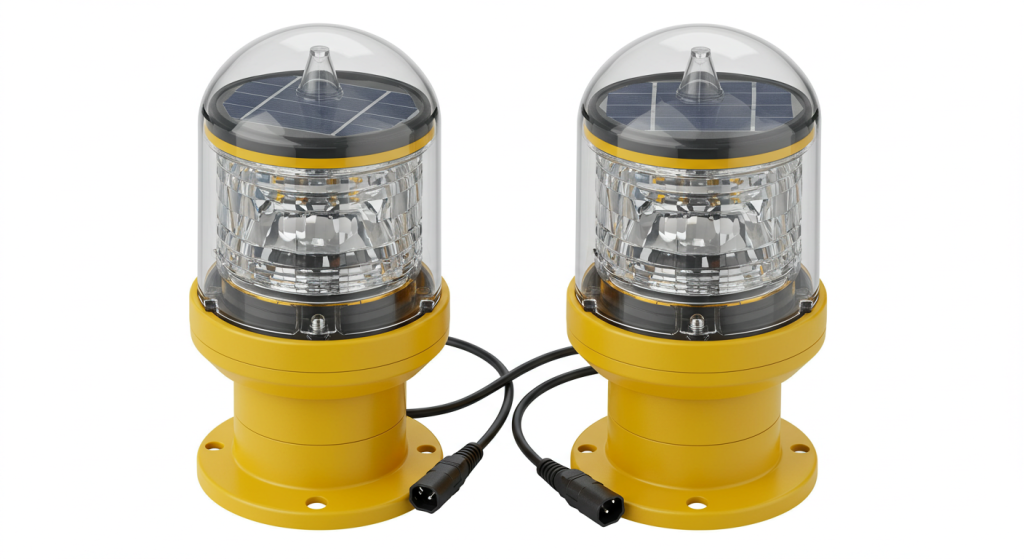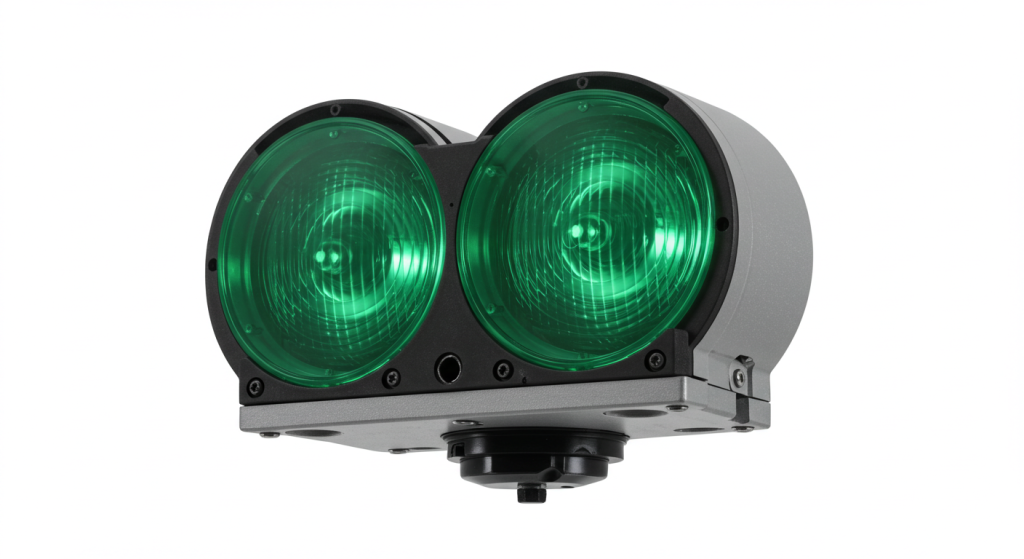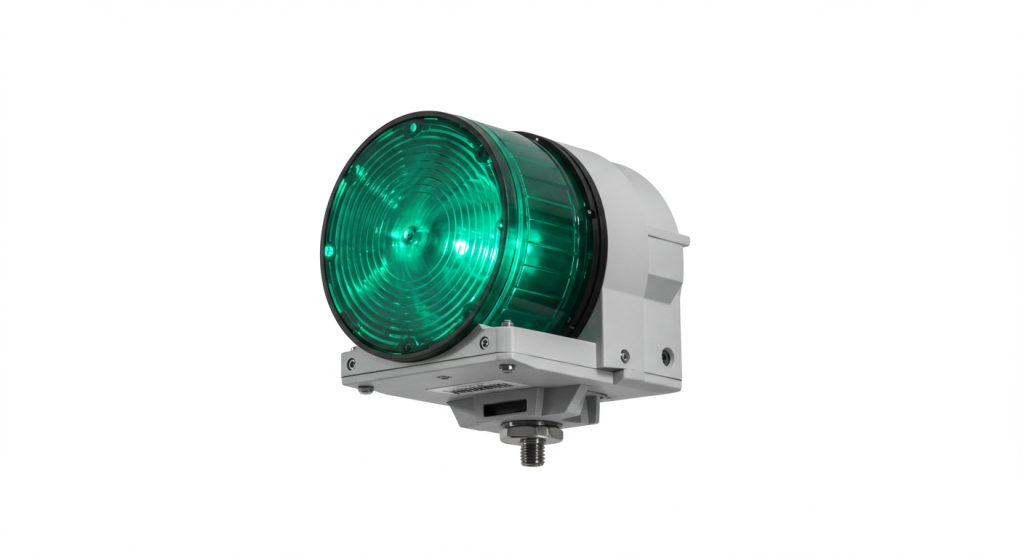Navigating the complexities of How to buy beacon light aircraft can be a daunting task for aircraft owners and pilots. These lights are indispensable for ensuring visibility and preventing collisions, but selecting the right one necessitates a thorough understanding of the various types, regulations, and operational considerations. A common question when searching for these components is, Which is the Best Aviation Lamp for Tower Price? Finding the balance between cost-effectiveness and safety is essential. This article aims to provide a comprehensive guide on aircraft beacon lights, their functions, and how to make informed purchase decisions.

Differentiating Beacon and Strobe Lights: An Essential Understanding
Before delving into the specifics of purchasing aircraft beacon lights, it’s crucial to distinguish between beacon lights and strobe lights. Beacon lights provide a continuous or rotating visual signal to indicate that the aircraft is in operation. Strobe lights, on the other hand, are high-intensity flashing lights used to enhance visibility, particularly during nighttime or low visibility conditions. An important consideration here is: What is High Intensity Strobe Light? These lights are engineered to produce a very bright, attention-grabbing flash, effective even under difficult conditions.
A Breakdown of Aircraft Lighting Options
To better grasp the nuances of aircraft lighting, it’s important to explore the different types and their respective functions:
- Beacon Lights: Commonly a rotating or flashing red light, used primarily to indicate that an aircraft is operational.
- Strobe Lights: High-intensity, flashing white or colored lights designed to enhance visibility, often positioned on the wingtips and tail.
- Navigation Lights: These include red (left wing), green (right wing), and white (tail) lights, which indicate the aircraft’s orientation to other traffic.
- Landing Lights: Powerful forward-facing lights used during takeoff and landing to illuminate the runway.
- Taxi Lights: Used during ground operations to illuminate the taxiway ahead of the aircraft.
Understanding these different lights will help in making informed choices for both beacon and strobe light installations.

Navigating the Question: Which is the Best Aviation Lamp for Tower Price?
When you are looking at, Which is the Best Aviation Lamp for Tower Price, the critical balance between affordability and quality should be your main consideration. There are several factors that will influence this decision:
- LED vs. Incandescent: While LED lights have a higher initial cost, they are much more efficient, longer-lasting, and consume less power. Incandescent lights, although cheaper upfront, will require more frequent replacements and therefore cost more in the long run.
- Light Intensity: The beacon light must have adequate intensity to be visible from a reasonable distance, especially during daylight.
- Durability and Weather Resistance: Any lighting fixture used on an aircraft must withstand extreme temperatures, rain, vibration, and other harsh environmental conditions.
- Certification and Compliance: Ensure that all the lights meet the required standards set by agencies such as the FAA (Federal Aviation Administration) or the EASA (European Union Aviation Safety Agency).
Considering these factors will help you choose the most appropriate lighting components for your needs.
A Step-by-Step Guide: How to Buy Beacon Light Aircraft
The process of How to buy beacon light aircraft requires a detailed and meticulous approach. It involves several key steps, each of which contributes to making a safe and informed purchase decision. Choosing the right light is not just about picking the first component that you see, but making informed choices for safety, reliability, and compliance.
1. Understanding Your Aircraft’s Specific Requirements
Every aircraft has unique lighting needs that depend on its size, operational environment, and intended purpose. It’s vital to ask yourself the following questions:
- What are the usual operating conditions? (Daytime, nighttime, low-visibility conditions, etc.)
- Does the manufacturer have any specific requirements?
- What is the electrical supply of the aircraft?
- Is weight a major factor for this specific type of aircraft?
2. Exploring the Market: Brands and Models
Once your specific requirements are clear, it’s time to research the different brands and models that fit your specific parameters:
- Review Products: Always look for reviews and opinions from other aircraft owners and pilots who have used the lights.
- Compare Specs: Always consider all specifications, such as intensity, power consumption, weight, certifications, and size of the various lights.
- Ask for Advice: Always look to experienced pilots and aviation technicians for advice and recommendations.
3. Confirming Certifications and Compliance
It’s important to make sure that any beacon light you select is certified and meets the necessary aviation regulations. This is vital for both safety and legal reasons:
- FAA or EASA Standards: Confirm the lights meet standards set by FAA or EASA.
- TSO Compliance: Check if the product meets the appropriate Technical Standard Order (TSO) requirements.
- Documentation: Make sure the product documentation, and all compliance information, is readily available from the manufacturer.
4. Evaluating Cost and Value
While considering the question, Which is the Best Aviation Lamp for Tower Price, be sure to prioritize overall value and quality over initial price. A lower upfront price can often lead to more frequent replacements and can end up costing more money in the long run, as well as being potentially less safe. Strike the correct balance between the initial price and the long-term value:
- Total Ownership Costs: Consider the initial price, as well as the cost of installation, upkeep, and replacement.
- Warranty and Customer Support: Choose a supplier that offers a good warranty and is responsive to customer support queries.
- Longevity: Select lights with a long lifespan to reduce the frequency of replacement. LED lights are often a good choice.
5. Focusing on Installation and Maintenance
To guarantee the lights are reliable, always ensure they are installed and maintained correctly. Following the manufacturer’s instructions for installation, and ensuring periodic checks are performed is vital for optimal functionality.
- Professional Installation: It’s often best to use a qualified aircraft mechanic to install your beacon lights.
- Routine Inspections: Routinely check the beacon lights for any signs of damage.
- Lens Maintenance: Always keep the lenses clean to ensure clear light transmission.
Following these recommendations will greatly contribute to the reliability and lifespan of your chosen beacon light.

Beacon Light vs. Strobe Light: Are They the Same?
Many people confuse beacon lights and strobe lights. The question of, Is beacon light the same as strobe light?, comes up frequently. The simple answer is, no, they are not the same. Although both improve the visibility of aircraft, they have different characteristics and uses. Understanding the differences is necessary to make informed choices.
Understanding the Key Differences
Here are some of the main differences between beacon lights and strobe lights:
- Function: Beacon lights indicate the aircraft is running, while strobe lights are designed to increase visibility to other aircraft by flashing.
- Light Type: Beacon lights are usually a steady or rotating red light, while strobe lights are high-intensity white or colored flashing lights.
- Intensity: Strobe lights are designed to be very high intensity in order to attract attention, while beacon lights are intended to have a lower, steady level of intensity.
- Location: Beacon lights are commonly located on top or bottom of the aircraft, while strobe lights are generally positioned on the wingtips and tail.
When to Use Each Light Type
The use of each light type depends on the type of operation, as shown below:
- Beacon Light Usage: Always turn the beacon light on before starting the engine, and keep it on during all ground operations, as well as for the duration of the flight, including takeoff and landing. This alerts everyone to an impending engine start.
- Strobe Light Usage: Use strobe lights during takeoff, landing, and during periods of low visibility. The main purpose of strobe lights is to increase visibility to other aircraft, so they should generally be turned off when operating in clouds or heavy precipitation.
Using each light type correctly is critical for ensuring safe and compliant flight operations.
Understanding the many differences between these lighting systems, including an understanding of What is High Intensity Strobe Light, is vital for making correct choices with regard to lighting compliance and safety.
The Legality of Flying Without a Beacon Light
The question, Is it legal to fly without a beacon light?, is a vital one for all pilots and aircraft owners. In most cases, it’s illegal to operate an aircraft without a fully functional beacon light. Aviation regulations mandate that beacon lights are a safety component, and a working light is required to operate an aircraft.
Legal Requirements
Aviation authorities, such as the FAA and EASA, have regulations covering aircraft lighting:
- Mandatory Use: All aircraft must have a functioning beacon light that is used during operation, especially at night or during low visibility.
- Operational Standards: The beacon light needs to meet minimum intensity and visibility standards.
- Maintenance: Operators and owners of the aircraft are responsible for the maintenance and operational status of the beacon lights.
You should always refer to the regulations that are specific to the operating country and jurisdiction of the aircraft.
Consequences of Non-Compliance
Flying without a required beacon light can cause serious problems:
- Legal Ramifications: Pilots can face penalties, including license suspensions or fines, for operating an aircraft without functioning beacon lights.
- Safety Issues: Reduced visibility increases the risk of a collision, particularly at night.
- Insurance Issues: An accident that occurs when the lighting is not compliant may result in denied insurance claims.
A working beacon light is vital for compliance and safety.
When Should You Use Beacon Lights?
Understanding, When to use beacon lights on aircraft?, is vital for all pilots. Beacon lights are essential for indicating an aircraft’s operational status to both ground personnel and other aircraft. Proper use of beacon lights will improve safety and will also reduce the likelihood of accidents.
Standard Operational Guidelines for Beacon Lights
Here are some typical guidelines:
- Before Engine Start: Turn the beacon lights on before starting the engine as a signal that the engine is about to start.
- During Engine Operation: The beacon light must be kept on for the whole time the engine is running.
- During Ground Movement: Use the beacon light whenever the aircraft is moving on the ground to add an extra level of visibility.
- During Flight: The beacon light is to remain on for the entire flight, from takeoff until engine shutdown.
Variations in Regulations
These are general guidelines and some minor variation may exist based on the region of operation:
- Aircraft Manuals: Refer to the aircraft’s operating manual for the correct procedures.
- Local Rules: Always ensure you are aware of local airport rules and procedures.
- Special Operations: Be aware that some operations may have special lighting needs, for example, formation flying.
Operating with beacon lights in accordance with the regulations will guarantee safe operation.
The importance of a functioning beacon light forms part of the question, Which is the Best Aviation Lamp for Tower Price and is necessary to the overall safe operation of the aircraft.
What are the Specific Requirements for Aircraft Strobe Lights?
Knowing the answer to, What are the requirements for strobe lights on aircraft?, is just as critical as understanding the beacon light requirements. Strobe lights significantly improve the visibility of the aircraft, and aviation bodies have specific standards to ensure they function properly.
Key Standards for Aircraft Strobe Lights
The following is an outline of key strobe light requirements:
- Intensity: Strobe lights must have sufficient intensity to be clearly visible, even in the presence of bright sunlight. Authorities will typically specify the minimum levels of intensity required.
- Flash Rate: The rate at which the strobe lights flash is regulated to make sure they are noticeable. The flash rate should be fast enough to grab attention, but not so fast that it is disorienting.
- Color: Typically, strobe lights are white, but some regulations will allow other colors depending on the positioning and use.
- Placement: The strobe lights are normally positioned on the tail and wingtips to give a wide field of view.
- TSO Compliance: All strobe lights must adhere to the relevant Technical Standard Order (TSO) standards set out by the aviation regulators.
Adhering to these regulations will guarantee that strobe lights perform their intended safety functions.
Maintenance and Installation
Maintenance and Installation should also meet specific standards:
- Professional Installation: To make sure the install is correct, use a qualified aircraft mechanic to install the lights.
- Regular Testing: Periodic checks should be made to ensure the lights are functioning within spec.
- Lens Condition: Always repair damaged or dirty lenses, to maximize light output.
When installation and maintenance procedures are followed correctly, this will increase the reliability and the lifespan of the strobes.
The use of What is High Intensity Strobe Light is very important, as these lights are designed to ensure maximum visibility, especially in difficult operating conditions.
Conclusion
Deciding on How to buy beacon light aircraft involves a complete assessment of many different factors, including the correct understanding of the different types of lights, and a good understanding of the regulations. The need to get Which is the Best Aviation Lamp for Tower Price needs to be balanced against the need for high-quality and compliance. This article has focused on the important areas such as the differences between beacon and strobe lights, and the legal requirements for operating with beacon lights, as well as correct usage for beacon lights, and the standards required for strobes.
By understanding the functions of each type of light, and how and when they should be used, aircraft owners and pilots can greatly improve safety. The use of What is High Intensity Strobe Light will guarantee enhanced visibility, particularly under difficult operating conditions and it’s a vital part of a comprehensive aircraft lighting strategy. The key takeaway here is that by making well-informed choices, you can prioritize compliance, safety, and operational effectiveness.